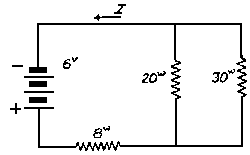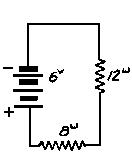 |
 |
 |
 |
| G = | 1 R1 |
+ | 1 R2 |
+ | 1 R3 |
= | 1 2 |
+ | 1 5 |
+ | 1 10 |
|
1 divided by 2 = .5 1 divided by 5 = .2 1 divided by 10 = .1 |
 Fig. 11—A series-parallel arrangement of resistance |
 Fig. 12 |

|
12 |
 |
| Content | ©1931, National Radio Institute |
| Webpage | ©1997, Nostalgia Air |
| Transcriber | Jennifer Ellis |